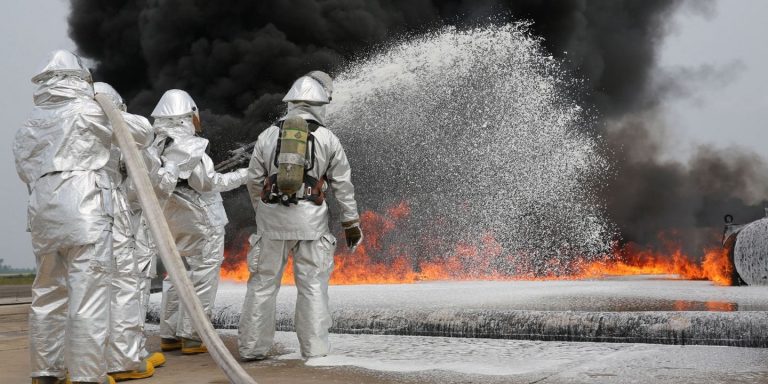New Senate bill limits firefighter exposure to PFAS
By Paula Gardner | MLive | August 2, 2019

Read full article by Paula Gardner (MLive)
“Many of Michigan’s known PFAS contamination sites got that way due to the use of fire-fighting foam containing the toxic chemicals.
While the chemicals are posing risks to residents as they flow into drinking water supplies and state officials are watching their movement in ground water and surface water, another group of people also watches the progress.
Firefighters…
The Protecting Firefighters from Adverse Substances (PFAS) Act of 2019 would direct federal agencies to develop best practices, training, and educational programs to reduce, limit and prevent exposure to PFAS, according to a news release from U.S. Sen. Gary Peters, D-Michigan.
The bill, he said, would also require guidance to be issued on alternative foams and personnel protective equipment that do not contain PFAS.
‘Firefighters are unfortunately exposed to extremely high levels of PFAS chemicals in the line of duty. Despite evidence linking PFAS to serious health problems, very little has been done to address the impact these chemicals can have on the health of the brave men and women who look out for our own safety,’ Peters said in the release.
According to Peters, firefighters face disproportionately high levels of PFAS exposure. In addition to the foam – , known as AFFF and used in situations like airplane crashes and tanker wrecks – the substances are a common ingredient in personal protective equipment…
The proposed bill would direct the Federal Emergency Management Agency (FEMA) to develop educational resources to help protect firefighters, emergency response personnel, and the communities they serve from PFAS exposure. FEMA would work in consultation with the Environmental Protection Agency (EPA), the U.S. Fire Administration, and the National Institute for Occupational Safety and Health to do this.
Efforts would include providing information for federal, state, and local firefighters on training and best practices to prevent and reduce exposure to PFAS from firefighting foams and protective gear, as well as resources that identify alternatives for firefighting tools and equipment that do not contain PFAS.
The bill is supported by national and state firefighting organizations.
It’s also welcomed by front-line activists, like Diane Cotter of New Hampshire.
‘Firefighters are largely unaware of the harm they are in,’ Cotter said. . ‘… We have been lobbying for standardized AFFF protocols and disposal methods’…
In the meantime, firefighting foam also has been among the focal points as the Senate and House approved their respective versions of the National Defense Authorization Act of 2020. The final version remains in progress.
Military uses of firefighting foam resulted in contamination at the former Wurtsmith Air Force Base in Oscoda; Camp Grayling; and Battle Creek National Guard base…
Other sponsors of the bill are Sens. Cory Gardner (R-Colorado), Dan Sullivan (R-Alaska), and Maggie Hassan (D-New Hampshire).
The proposals are among more than two dozen proposed bills from Congress so far in 2019. They come as more states are taking steps to identify the chemicals within their communities – and as several initial regulations for how much of certain types of the chemicals will be allowed in drinking water sources.
Environmental Working Group estimates say the chemicals have been found in 712 sites in 49 states.“
This content provided by the PFAS Project.
Location:
Topics: